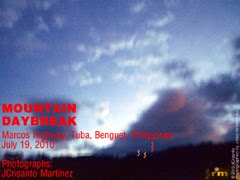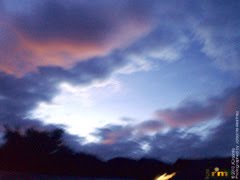



































13:52 GAWA DOS
Ongoing from July 3 to 30, 2009 is “13:52 GAWA DOS,” the GSIS Museo ng Sining Lower Gallery art exhibition for the month of July. “13:52 Gawa Dos” looks at the state of Contemporary Philippine Art from the country’s largest metropolitan centers – Metro Manila and Metro Cebu. The exhibition, which tackles the diversity-similarity of aesthetics and art making in both regions as they affect and effect in the making of Philippine Art today, presents the works of the Cebu City artists Bambie Beltran, Gary Carabio, Sio Montera, Palmy Pe-Tudtud, and Javy Villacin; and Manila artists Aaron Bautista, Joey Cobcobo, Jes Evangelista, Josef Laureano, Amanda Legasto, Derrrick Macutay, JCrisanto Martinez, and Marga Rodriguez.
The pluralism that characterizes Filipino aesthetics is a consequence of its lengthy and extensive period of cultural history. Philippine art is a result of the country’s cross cultures from its colonial past. A number of cultures permeated into the nation across the centuries ranging from polytheism to the current demands of virtual reality.
The centralization of resources to city centers gave rise to metropolitan cities. Over and misdirected development churned out variant nightmarish residues in the form of pollution, end user trash, and traffic jams – the milieu of many artist’s perfumed aspirations or incensed pragmatism. Supermegamalls, CATV, and the World Wide Web obliterated borders of culture. Themes arise to interweave common fibers of our culture as a result of divergence of topography and orientation. Visual artists position their proverbial subject matters in their historical milieu. Thus, cultural identity became the quest for which the precedent is used to enlighten the current.
Such background is necessary to confront the status of the diversity-similarity of aesthetics and art making in both regions as they affect and effect in the making of Philippine Art today. Cebu City and the City of Manila are similar to each other in one perspective – and yet so diverse from each other in another. And this diversity-similarity has further nourished the country’s cultural uniqueness. Their visual arts are molded by features that also effect the nation. Religious conviction, political beliefs, geographic backdrop as a reflection of multicultural traditions, and the Occidental interference which has left an ineffaceable blot in the consciousness of the Filipinos are the most common of these.
Artworks reflect split visuals of Philippine culture and technology. The schism of Christian faith and pantheistic folk mysticism, the socio-political-economic anxiety of the people, and the traditional, vernacular, ethnic cultures as opposed to contemporary modernistic inclinations are mirrored in the artworks from the provinces just like in Manila.
What becomes unmistakable in 13:52 Gawa Dos is that the artists struggle to conceive expressions that stem from a rekindling of ancestry and heritage, distinguishing an aesthetic distinctive to one’s culture, or locality. The oeuvres projected global concerns such as the desecration of the environment, women and gender biases, the unending twofold tension amidst the rulers and the ruled, the influential and the impotent, sanctified and unconsecrated, calm and uproar, war and peace, etc., captured the imagination of the artists who reacted with artworks and concomitant aesthetic norms.
As a collective exhibition, 13:52 Gawa Dos impacts a visual conscious collective aspiration, a voyage of ascertaining the artists’ selves, not only the likeness they share, not only a tyrannical colonial experience under different imperialist supremacies, but also certain cultural, ethnic, spiritual, aesthetic and verbal communication patterns, parallel to the immediacy of themes, sources and inspiration found in Philippine life and culture, as they truly nurture and sustain artmaking in the present times.
Presented in the exhibition are the expressions of the Cebu City countryside in the works of Gary Carabio and the homage to his native Angono in the oils of Aaron Bautista; woman in womanhood as evoked by flora in Marga Rodriguez’s flower-portraiture, the erogenous transcriptions of experiences as accounted by a woman’s legs in the canvases of Bambie Beltran, magnanimity in the portraiture of Amanda Legasto, and woman substantiated by form and issues in the paintings of Palmy Pe-Tudtud; the portrayal of tempered emotions in freeform in the mixed media of Sio Montera and the bold gestural brushstrokes of the internal orations in the abstractions of Josef Laureano; man engulfed by technology and digested by man himself in the figures of Derrick Macutay; the visual oratory of personal faith and the hope for salvation in the woodcut monoprints of Joey Cobcobo side by side with art meets science meets philosophy in the dreamscapes of Javy Villacin; the collective images rendered in layered shapes from flat to textured media in the paintings of Jes Evangelista; and, the personal/interpersonal critique in the acrylic washes on burlap of JCrisanto Martinez.
13:52 Gawa Dos thereby testifies that despite and perhaps because of economic need, the Filipino artist persists to tread on the artistic passageway, motivated as much by pure fortitude as by aptitude, articulating home-grown art refined by society’s various influences. Unrestricted creativity as an artistic perquisite is brought beyond the confines of Western prototype/archetype of what is noteworthy and what is not. Like their fellow Filipino visual artists, the Cebu and Manila artists in 13:52 Gawa Dos scrutinized the interior (covert) self as they discard the trimmings of the exterior self covered with Western formulations and other pretensions.
The 13:52 GAWA DOS exhibit opening and reception with the artists is scheduled on July 3, 2009, Friday at 6:00 pm and shall run until July 30, 2009. The GSIS Museo ng Sining Lower Gallery is located at the GSIS Building, Financial Center, Roxas Boulevard, Pasay City 1308 Philippines. For inquiries please call Ms. Leslie Fangonil at (632) 479.35.88 or Mr. Joey Martinez at (+63) 922.331.41.08. Online inquiries can be channeled thru info@artepinas.tk or log on to the website www.artepinas.tk.
Texts:
JCrisanto Martinez, 2009




































